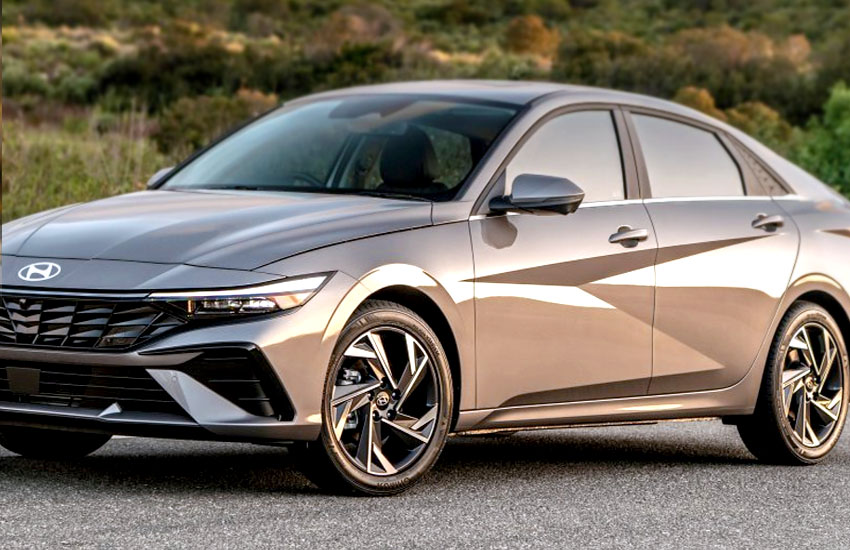As an Amazon Associate, I earn from qualifying purchases at no extra cost to you.
What Does CVT Transmission Mean: Unlocking the Secrets
Have you ever heard someone talk about a “CVT transmission” and wondered what that actually means? It’s one of those terms you hear thrown around in car ads or discussions, but you’re not quite sure what it’s all about. Well, you’re not alone! CVT stands for “Continuously Variable Transmission,” and while it sounds like a mouthful, once you understand how it works, it can make driving feel like a breeze.
In this guide, we're diving deep into what a CVT transmission is, how it works, and why it’s gaining so much popularity in modern cars. Whether you’re a car enthusiast or just trying to understand more about the vehicle you drive, this breakdown will make things clear and easy to understand. So, buckle up!

What is a CVT Transmission?
A CVT transmission is a type of automatic transmission that allows a car to smoothly transition between gears without the usual “shifting” you feel in a traditional transmission. Instead of having set gears like in conventional automatic transmissions, a CVT uses a system that continuously adjusts its ratio as you accelerate, providing a smoother and more efficient driving experience.
At first glance, this might sound like a complicated, high-tech feature, but the simplicity of the CVT is actually what makes it so beneficial. It takes away the “jerkiness” that sometimes happens when traditional gears shift, offering a more fluid ride. If you've driven a modern car and felt like the car was always in the “right gear,” chances are it was using a CVT.
How Does a CVT Transmission Work?
Unlike a traditional automatic transmission, which has a fixed number of gears, a CVT doesn't have these specific gear steps. It uses a set of pulleys and a belt or chain to deliver the perfect amount of power to the engine at all times. Here’s how it works:
Pulleys and Belt/Chain: A CVT consists of two pulleys – one attached to the engine and one attached to the drive shaft. Between these pulleys is a belt or chain that connects them. The pulleys themselves can change size depending on the car’s speed and the engine’s power needs.
Changing Ratios: As the car accelerates or decelerates, the pulleys adjust their size to change the ratio of engine power to wheels. This allows the engine to work more efficiently, without the need for distinct gear shifts.
Efficiency: Because of this constant adjustment, the engine can operate at its most efficient level for any given speed, which can improve fuel economy and performance. The car will accelerate smoothly and with less strain on the engine.
Key Advantages of CVT Transmission
Smooth Driving Experience: Since there are no distinct gears, you don't experience the jolt or hesitation typical with traditional transmissions. Whether you're accelerating from a stop or cruising at high speeds, the power is delivered smoothly.
Fuel Efficiency: CVTs are more fuel-efficient because they keep the engine in its optimal power band, which means less fuel is wasted. This is why many hybrid cars use CVTs—they help maximize fuel savings.
Better Control: CVTs can help you feel more in control when driving. As the pulleys adjust automatically, they maintain the perfect engine RPMs, which makes for a much smoother experience, especially when going up or down hills.
Less Wear and Tear: Traditional automatic transmissions have gears that can wear out over time. A CVT, on the other hand, doesn't have those fixed gears, so it generally experiences less wear and tear.
Key Disadvantages of CVT Transmission
No “Shifting Feel”: Some drivers miss the feeling of a car shifting through gears. With a CVT, you don't get the satisfying “shift” sensation that you might be used to in older vehicles. This can be a downside for driving enthusiasts.
Potential for Overheating: Because a CVT is constantly working to adjust its ratios, it can sometimes overheat, especially under heavy loads like towing or aggressive driving. However, most modern CVTs have built-in systems to prevent this.
Repairs Can Be Expensive: If something goes wrong with a CVT, repairs or replacements can be pricier than traditional transmissions. But given their longer lifespan, many drivers find that they don't have to deal with this issue often.
Why is CVT Transmission Gaining Popularity?
Now that we know what a CVT is and how it works, you might be wondering why it's becoming so popular in cars today. From hybrids to family sedans, more and more vehicles are using CVTs. Let's explore some reasons behind this trend.
1. Fuel Efficiency and Environmental Benefits
Fuel economy is a huge concern for modern drivers, especially as gas prices fluctuate. Because CVTs can adjust to keep the engine running at its most efficient RPMs, they help cars get better mileage. In a time when saving money at the pump is more important than ever, having a CVT can make a noticeable difference in how often you have to fill up your tank.
Moreover, fewer fuel emissions are produced due to the engine operating more efficiently. If you’re considering a hybrid vehicle, there's a high chance it will come with a CVT to make the most out of its electric and gasoline power sources.
2. Performance Enhancements
At first, you might not think of a CVT as a “performance” transmission. But here's the cool thing: it lets the engine stay at its best power output for any given situation, whether you’re accelerating quickly or just cruising along. This makes for a smoother, more responsive driving experience.
Some people think that driving a car with a CVT feels a little strange because it doesn't have the typical “gear shift” sensation. However, the result is an incredibly smooth ride with no jerky transitions between gears. This is especially noticeable in stop-and-go traffic or when merging onto highways.
3. More Comfort for Drivers
One of the biggest appeals of CVT technology is the comfort factor. If you've driven a traditional automatic transmission, you've probably noticed the feeling of the car “shifting” as you accelerate. With a CVT, this doesn't happen. The car accelerates smoothly, which means you won't have to deal with any uncomfortable jerks or hesitation.
For those who do a lot of city driving or long road trips, a CVT transmission can make your ride a lot more comfortable by providing consistent and smooth acceleration without any interruptions.
4. Reduction in Maintenance Costs
While CVTs can sometimes be more expensive to repair if something goes wrong, the good news is that they require less maintenance in general. Since there are no gears that need to be replaced or repaired over time, a CVT can last longer than traditional automatic transmissions.
Additionally, many CVTs require less frequent fluid changes than conventional automatic transmissions, making them cheaper to maintain in the long run.
Are These Questions in Your Mind?
Is it true that CVT transmissions are more efficient than automatic ones?
Yes, CVTs are more efficient because they can keep the engine in its optimal power range, reducing fuel consumption.
Can a CVT transmission be used for towing?
While some CVTs are designed to handle towing, many are not. It’s essential to check the vehicle’s specifications to see if it's rated for towing.
Do I need to worry about the longevity of a CVT transmission?
CVTs are built to last a long time with proper care, but like any component, they can wear out if not maintained properly.
Is it harder to drive with a CVT?
Not at all! In fact, CVTs often make driving easier because they provide a smooth and continuous acceleration without the jolt of gear shifts.
Can I drive a CVT like a manual car?
While you can’t manually shift a CVT like a traditional manual car, some CVTs have “manual” modes that simulate gear shifts.
Do I need special care for CVT maintenance?
CVTs require less maintenance than traditional automatic transmissions but still need attention, like regular fluid checks and changes.
Is it possible to feel the difference between CVT and regular transmissions?
Yes, the most noticeable difference is the smooth acceleration without the feeling of distinct gear shifts.
Can I switch my car’s CVT for a traditional transmission?
Generally, it’s not advisable to switch to a traditional transmission due to significant mechanical and electronic differences between the two systems.
Is it true that CVTs are used more in hybrid vehicles?
Yes, many hybrid vehicles use CVTs because of their ability to optimize engine performance and fuel efficiency.
Do I need to worry about CVT failure?
If you maintain your CVT properly, it should last for a long time. However, like any part of your car, it can fail if neglected.
I hope this guide helped you understand what CVT transmissions are all about and why they're becoming more common in cars today. From fuel savings to smoother driving, CVTs offer a lot of benefits that make them a great option for many drivers. Now that you're in the know, you’ll have a much clearer idea the next time you hear someone mention a CVT. Drive safe!


